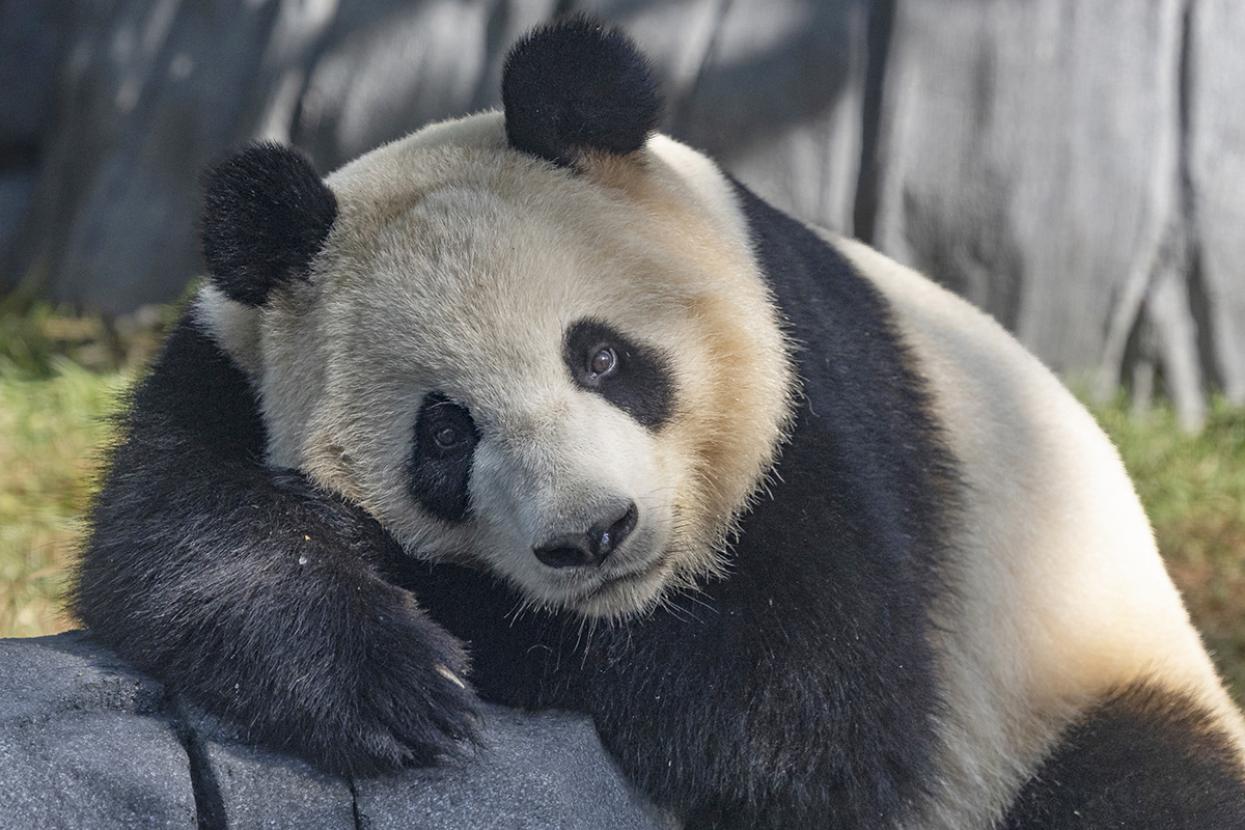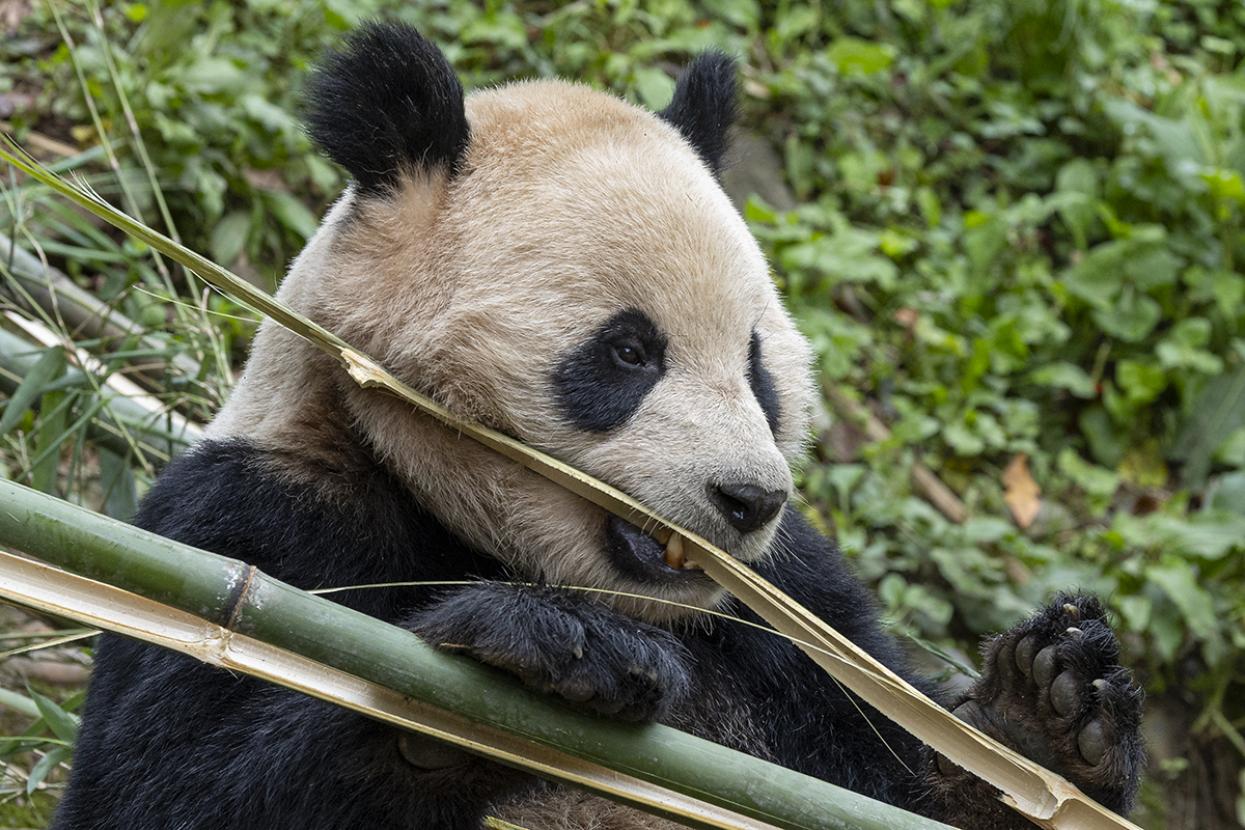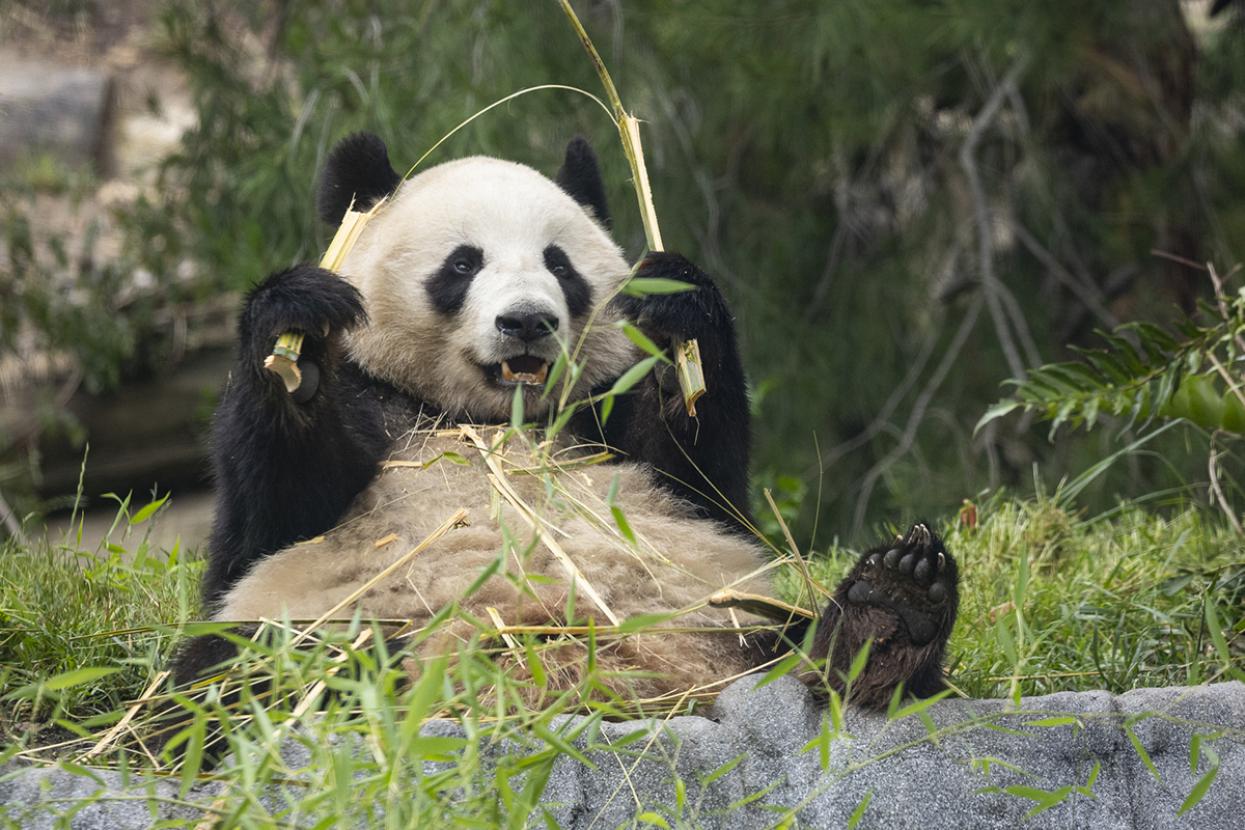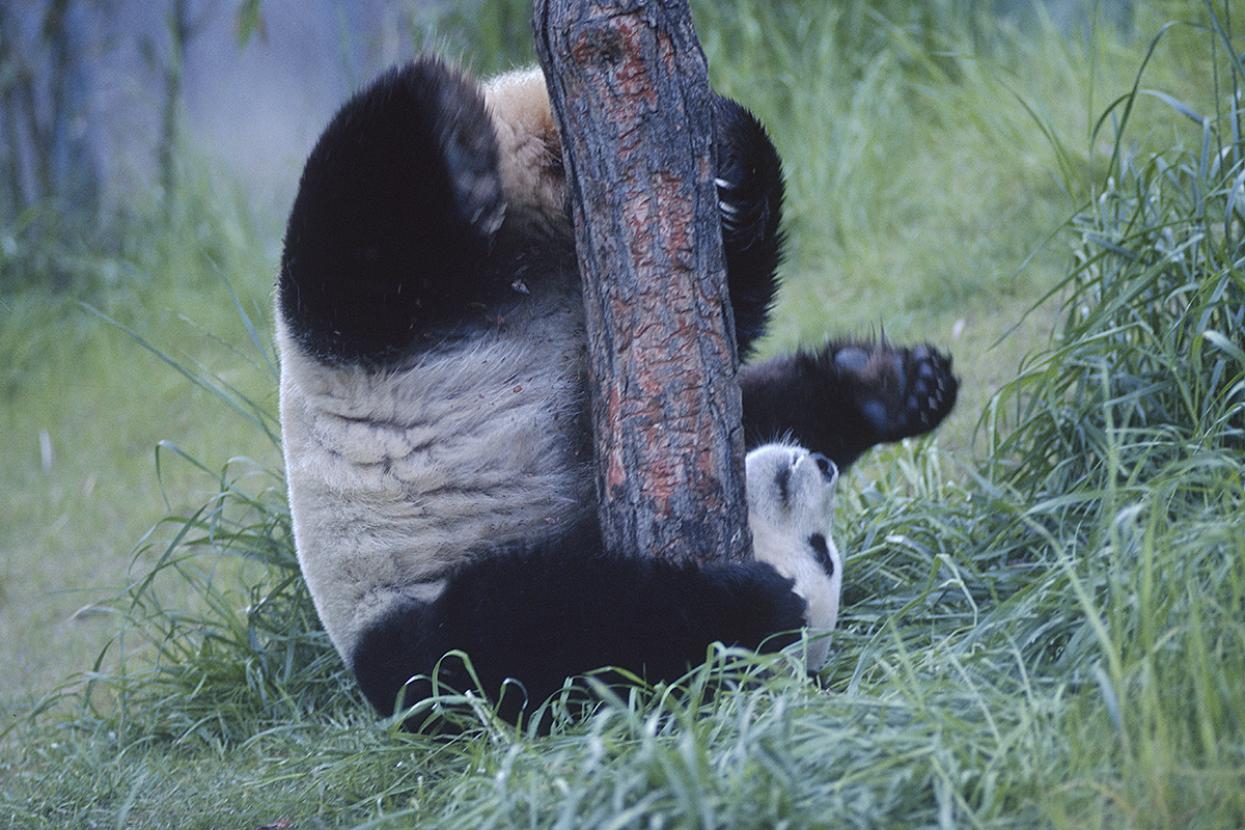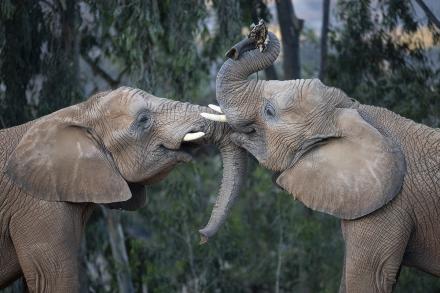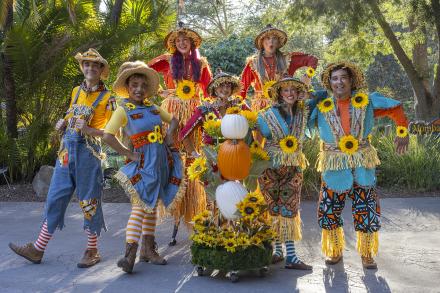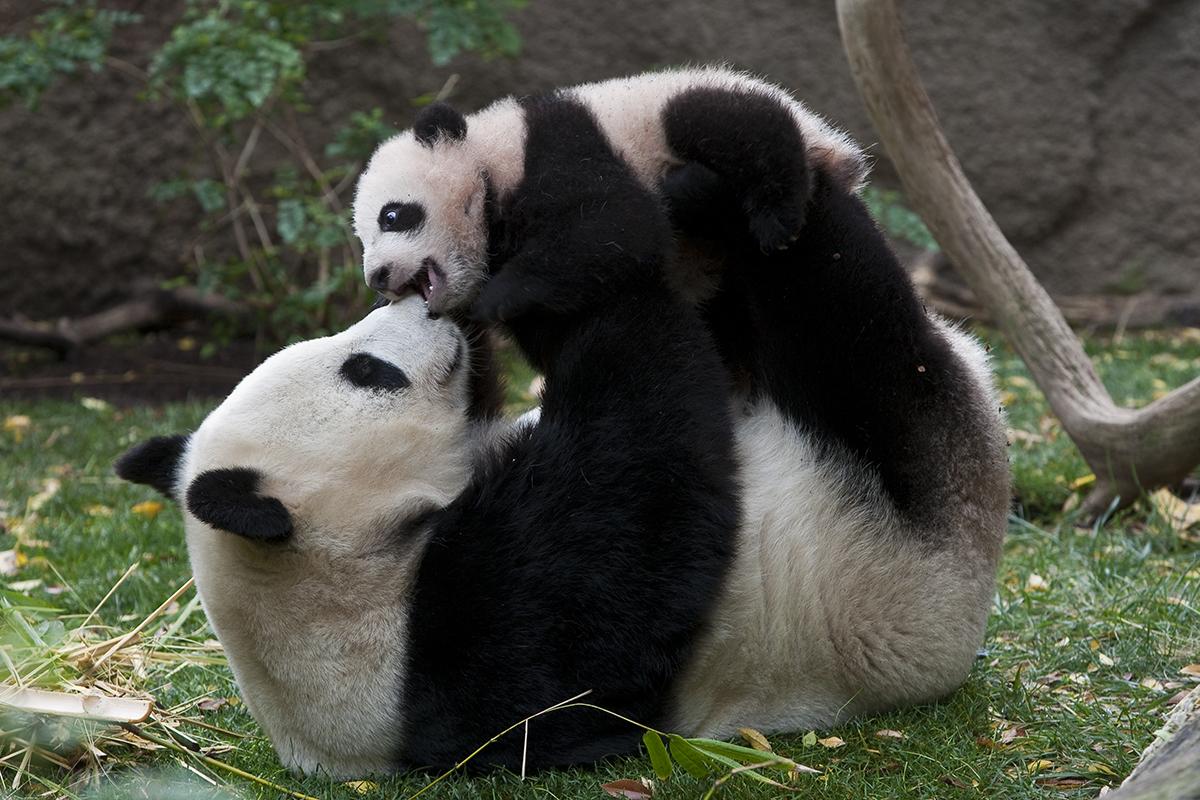
Giant pandas are iconic and incredibly unique. Before your next visit to connect with Xin Bao and Yun Chuan at Denny Sanford Panda Ridge, brush up on your knowledge about their species. Impress your friends and loved ones while gaining a deeper appreciation for these dynamic bears. With the support of wildlife allies like you, we’re making a difference for giant pandas across the globe through our Asia Conservation Hub.
Giant pandas are part of the bear subfamily Ailuropodinae.
- Giant pandas live in damp, misty forests across the provinces of Sichuan, Shaanxi, and Gansu in South Central China.
- There are only eight species of bears. Pandas are the only member of the subfamily Ailuropodinae.
Their "psuedothumbs" help make them bamboo-eating experts.
- Panda diets are 99% bamboo. On average, they eat up to 50 pounds of fresh bamboo leaves, stems, and shoots daily. Because of all that fiber-dense material, they poop almost the same amount every day!
- You might be wondering what the other 1% of their diet consists of. It’s far more infrequent, but they might eat grass, fruits, insects, eggs, and carrion, in addition to sand and soil. Interestingly, giant pandas have lost the ability to taste proteins because of their plant-based diet.
Pandas can eat up to 50 pounds of bamboo every day.
- And speaking of bamboo, panda’s opposable “pseudothumbs”—which are actually enlarged wrist bones—have uniquely adapted to grasp and manipulate bamboo so it’s easier to eat. Now that’s finger food.
- These bears are chewing machines. A panda’s skull, jaws, chewing muscles, and teeth are adapted for crushing and chewing bamboo.
Sometimes, male pandas will do "handstands" to leave their rear-end scent marks higher.
- Giant pandas have short, powerful limbs. Proportionally, their legs are shorter than those of other bears and their front legs are longer than their back ones.
- Giant pandas use scent marking to communicate with each other. When leaving their mark with rear-end scent glands, sometimes male pandas will do handstands. If their scent markings are the highest, they’re obviously the biggest, tallest panda.
Pandas make at least 12 distinctive sounds. Young cubs are known to croak or squeal.
- Pandas are about the size of a stick of butter when they’re born, which is about 1/900th the size of their mother.
- They make at least 12 distinctive sounds. Friendly bleats can be heard most commonly. A huff, snort, or chomp may indicate apprehension. Sometimes, they can also be heard barking and chirping in varying combinations and with varying intensities.
When you visit Panda Ridge, you might find Xin Bao perched up in a tree enjoying a snack.
- Scientists can’t agree on why they have black and white coats. Pandas don’t have any natural predators so they might not be for camouflage. On the other hand, they also don’t hunt, so their markings probably aren’t to confuse prey either. Maybe their fur pattern is either an invite during breeding season or a warning for other bears to stay away. Although we don’t know the exact reason why, pandas’ coats still help them seamlessly disappear into the bamboo forest.
- Despite spending most of their days resting, sleeping, and eating, some giant pandas, like Xin Bao, enjoy climbing trees and hanging out among the high branches.
Explore what you’re making possible for giant pandas and other wildlife through our Asia Conservation Hub.

